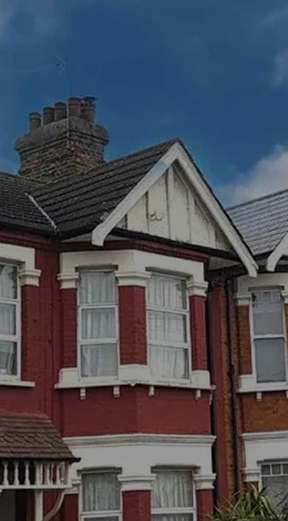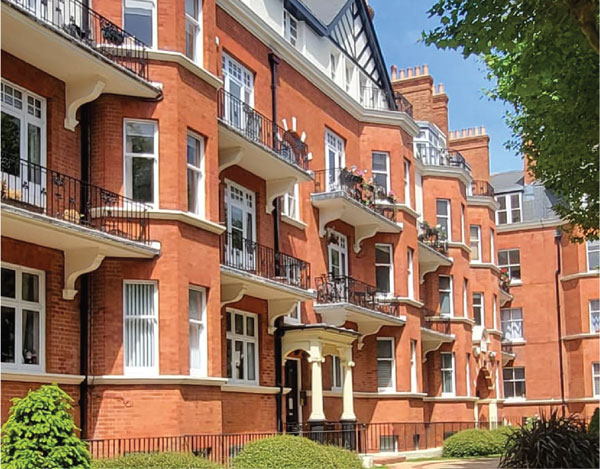About tenant rights, the interpretation of statutory provision, and the procedure to follow in the exercise of the Right to Buy
Chapman v Barking and Dagenham London Borough Council [1997] 2 EGLR 141
Summary
The case of Chapman v Barking and Dagenham London Borough Council [1997] 2 EGLR 141 is a case disputing the entitlement of the holder of the tenancy to buy the council property under the Right to Buy scheme. Indeed, this case practically incarnates tenant rights, the interpretation of statutory provision, and the procedure to follow in the exercise of the Right to Buy.
Facts
Mrs. Chapman, the appellant, was the tenant of the premises belonging to the Council of the London Borough of Barking and Dagenham. She had been in possession of the said premises for a long time and chose to stand upon her right to purchase the premises at a price reduced beneath the market value.
Mrs. Chapman made an application with the Council to start the process to the Right to Buy, yet the councils refused to accept her application on the grounds of her ineligibility. The Council contended that she was not a secure tenant for the period spelt out in the Right to Buy scheme's governing legislation.
Mrs. Chapman challenged the Council determination. She asserted that she was secure tenant for the relevant period and thus entitled to make an application to acquire the property. As a result of her challenge, the county court relied on the dispute to make the first application.
Issues
The Key issues in the case involved:
1. Whether Mrs. Chapman was entitled to exercise the Right to Buy.
2. The construction of the relevant statutory provisions on the secure tenancy qualifying period.
3. Whether the Council's decision to refuse the application was procedurally correct.
First Instance
Mrs. Chapman filed the case in the county court, submitting all the evidence she was in possession of a secured tenant for the sufficient qualifying period. This included agreements of tenancy, rent payment records and what other documentary evidence might relate to the case. The Council defended the case by disclosure of its interpretation of statutory requirements and what it had in evidence upon the grant of eligibility to Mrs. Chapman.
The county court, however, took into account the evidence submitted by the claimant and Yemeni and the statutory provisions relied on. It took into them in the Council's favour that Mrs' Chapman was not disqualified in the criteria by the council's policy.
Thus, it is established that the defendant's decisioSTOPn to disqualify in the RTB application was in consonance with statutory stipulation.
Decision on Appeal
Mrs. Chapman appealed the decision of the county court on the grounds set out above; that is, that the county court did not interpret properly the statutory provisions that governed the case and did not address the application of relevant provisions to facts in situ correctly.
The Court of Appeal looked at the of the county court considered the county court's decision, and the analysis of the interpretation of the statutory provisions, and the evidence on which to base that decision. The Court of Appeal said that the county court had, it was right, erred in the interpretation of the eligibility provisions of the Right to Buy.
The Court of Appeal held that Mrs. Chapman did achieve the statutory required period of secure tenancy which the statute dictates. It was apparent that the Council fell into an error of law of the statutory scheme. And that Mrs. Chapman was perfectly entitled and well within her Rights to Buy the property.
Comments
The judgment in the case of Tunneard-Michael Chapman and Barking and Dagenham London Borough Council is interesting for a number of reasons:
1. Interpretation of Statutory Provisions There is a claim to correctness in the interpretation of all relevant statutory provisions that regulate the kind of tenancy rights in question under the case of the Right to Buy scheme. The decision of the Court of Appeal confirms that local housing authorities should correctly and reasonably interpret the law in relation to the case of any individual citizen.
2. Tenant rights: the case will protect the rights of tenants under the right-to-buy scheme and signify that those eligible to exercise their purchase rights of their homes have a right to it. Within its limits, it contains the clear protection of tenant rights from any possible erroneous or capricious decisions on the part of the councils.
3. Procedural Fairness: The case emanates the aspect of procedural fairness during the process of decision making by the local authorities. It was observed that the decision of the council that rejected the application of Ms. Chapman was flawed in procedural terms because it was grounded on an improper reasoning of the legislation.
4. Precedent for Future Cases: The judgment will set a precedent on future cases related to the Right to Buy scheme. It shall be guidance to others, referring to the right and the proper approach in the interpretation of the qualification. It also strengthens up local authorities on working within the statutory framework.
5. That Judiciary Monitoring: This case does expose the fact that there is a need for judiciary monitoring so that the local authority is within the law and in its steps of considering the rights of the tenants. The appeal process is a very crucial tool in making these failures right and thus ensuring justice.
Conclusion: The case of Chapman v. Barking and Dagenham London Borough Council is hence a landmark that helps to delineate the application of the right to buy scheme and further underscores the place of accurate statutory interpretation, which within its fold has procedural fairness in having to protect tenants' rights. The judgment has, therefore, been a savior of a just and fair principle in the housing laws and has enforced better protection of the right to buy to well-qualified tenants.
Social
Valuation Services provided by Ringley's Valuation Team
Block Management Packages
Legal Services provided by Ringley Law
Building Surveying Services
Meet our Expert Property Commentators
About tenant rights, the interpretation of statutory provision, and the procedure to follow in the exercise of the Right to Buy
Chapman v Barking and Dagenham London Borough Council [1997] 2 EGLR 141
Summary
The case of Chapman v Barking and Dagenham London Borough Council [1997] 2 EGLR 141 is a case disputing the entitlement of the holder of the tenancy to buy the council property under the Right to Buy scheme. Indeed, this case practically incarnates tenant rights, the interpretation of statutory provision, and the procedure to follow in the exercise of the Right to Buy.
Facts
Mrs. Chapman, the appellant, was the tenant of the premises belonging to the Council of the London Borough of Barking and Dagenham. She had been in possession of the said premises for a long time and chose to stand upon her right to purchase the premises at a price reduced beneath the market value.
Mrs. Chapman made an application with the Council to start the process to the Right to Buy, yet the councils refused to accept her application on the grounds of her ineligibility. The Council contended that she was not a secure tenant for the period spelt out in the Right to Buy scheme's governing legislation.
Mrs. Chapman challenged the Council determination. She asserted that she was secure tenant for the relevant period and thus entitled to make an application to acquire the property. As a result of her challenge, the county court relied on the dispute to make the first application.
Issues
The Key issues in the case involved:
1. Whether Mrs. Chapman was entitled to exercise the Right to Buy.
2. The construction of the relevant statutory provisions on the secure tenancy qualifying period.
3. Whether the Council's decision to refuse the application was procedurally correct.
First Instance
Mrs. Chapman filed the case in the county court, submitting all the evidence she was in possession of a secured tenant for the sufficient qualifying period. This included agreements of tenancy, rent payment records and what other documentary evidence might relate to the case. The Council defended the case by disclosure of its interpretation of statutory requirements and what it had in evidence upon the grant of eligibility to Mrs. Chapman.
The county court, however, took into account the evidence submitted by the claimant and Yemeni and the statutory provisions relied on. It took into them in the Council's favour that Mrs' Chapman was not disqualified in the criteria by the council's policy.
Thus, it is established that the defendant's decisioSTOPn to disqualify in the RTB application was in consonance with statutory stipulation.
Decision on Appeal
Mrs. Chapman appealed the decision of the county court on the grounds set out above; that is, that the county court did not interpret properly the statutory provisions that governed the case and did not address the application of relevant provisions to facts in situ correctly.
The Court of Appeal looked at the of the county court considered the county court's decision, and the analysis of the interpretation of the statutory provisions, and the evidence on which to base that decision. The Court of Appeal said that the county court had, it was right, erred in the interpretation of the eligibility provisions of the Right to Buy.
The Court of Appeal held that Mrs. Chapman did achieve the statutory required period of secure tenancy which the statute dictates. It was apparent that the Council fell into an error of law of the statutory scheme. And that Mrs. Chapman was perfectly entitled and well within her Rights to Buy the property.
Comments
The judgment in the case of Tunneard-Michael Chapman and Barking and Dagenham London Borough Council is interesting for a number of reasons:
1. Interpretation of Statutory Provisions There is a claim to correctness in the interpretation of all relevant statutory provisions that regulate the kind of tenancy rights in question under the case of the Right to Buy scheme. The decision of the Court of Appeal confirms that local housing authorities should correctly and reasonably interpret the law in relation to the case of any individual citizen.
2. Tenant rights: the case will protect the rights of tenants under the right-to-buy scheme and signify that those eligible to exercise their purchase rights of their homes have a right to it. Within its limits, it contains the clear protection of tenant rights from any possible erroneous or capricious decisions on the part of the councils.
3. Procedural Fairness: The case emanates the aspect of procedural fairness during the process of decision making by the local authorities. It was observed that the decision of the council that rejected the application of Ms. Chapman was flawed in procedural terms because it was grounded on an improper reasoning of the legislation.
4. Precedent for Future Cases: The judgment will set a precedent on future cases related to the Right to Buy scheme. It shall be guidance to others, referring to the right and the proper approach in the interpretation of the qualification. It also strengthens up local authorities on working within the statutory framework.
5. That Judiciary Monitoring: This case does expose the fact that there is a need for judiciary monitoring so that the local authority is within the law and in its steps of considering the rights of the tenants. The appeal process is a very crucial tool in making these failures right and thus ensuring justice.
Conclusion: The case of Chapman v. Barking and Dagenham London Borough Council is hence a landmark that helps to delineate the application of the right to buy scheme and further underscores the place of accurate statutory interpretation, which within its fold has procedural fairness in having to protect tenants' rights. The judgment has, therefore, been a savior of a just and fair principle in the housing laws and has enforced better protection of the right to buy to well-qualified tenants.
Valuation Services provided by The Ringley Group
Meet our Expert Property Commentators























































